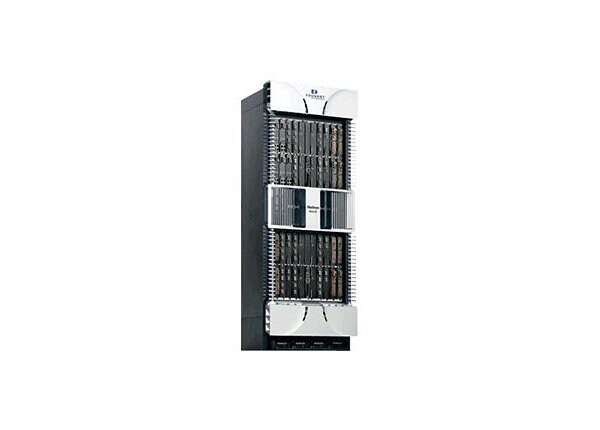
Know your gear
Today's network planners require solutions that provide the right mix of functionality and high performance while reducing Total Cost of Ownership (TCO). In addition, a solid, future-proof network design must be able to handle the rapid pace of technology change. The increasing role of the converged network makes high availability and Quality of Service (QoS) crucial to the success of many of today's deployments.
The Brocade NetIron MLX Series of switching routers is designed to meet all these requirements and more. Built with a state-of-the-art, fifth-generation, network processor-based architecture and Terabitscale switch fabrics, the NetIron MLX Series provides a rich set of high-performance IPv4, IPv6, MPLS, and Multi-VRF capabilities as well as advanced Layer 2 switching capabilities. As a result, these routers address the diverse needs of environments ranging from data centers, large enterprises, government networks, education/research, High-Performance Computing (HPC), metro networks, and ISPs.
Designed to enable reliable converged infrastructures and support mission-critical applications, the NetIron MLX Series features an advanced redundant switch fabric architecture for very high availability. The architecture ensures that the system continues to operate at peak performance even in the case of a switch fabric card failure. In the highly unlikely case of additional fabric failures, the advanced architecture allows the system to continue operating in a graceful degradation mode where the system tunes its performance to the remaining fabric capacity. The advanced fabric architecture is complemented by comprehensive hardware redundancy for the management modules, power supplies, and cooling system. In addition, the Brocade Multi-Service IronWare operating system, powering the NetIron MLX Series, offers hitless management failover with OSPF and IP multicast non-stop routing, BGP graceful restart capabilities, as well as hitless (in-service) software upgrades to further enhance both system availability and overall network availability.
Each router has the lowest power consumption and heat dissipation among its class. The leading density of each router and its small form factor yield significant space savings. These unique aspects help enable substantial savings on power, cooling, and rack space costs, thereby reducing overall Operating Expenditures (OpEx).
The Brocade NetIron MLX Series of switching routers is designed to meet all these requirements and more. Built with a state-of-the-art, fifth-generation, network processor-based architecture and Terabitscale switch fabrics, the NetIron MLX Series provides a rich set of high-performance IPv4, IPv6, MPLS, and Multi-VRF capabilities as well as advanced Layer 2 switching capabilities. As a result, these routers address the diverse needs of environments ranging from data centers, large enterprises, government networks, education/research, High-Performance Computing (HPC), metro networks, and ISPs.
Designed to enable reliable converged infrastructures and support mission-critical applications, the NetIron MLX Series features an advanced redundant switch fabric architecture for very high availability. The architecture ensures that the system continues to operate at peak performance even in the case of a switch fabric card failure. In the highly unlikely case of additional fabric failures, the advanced architecture allows the system to continue operating in a graceful degradation mode where the system tunes its performance to the remaining fabric capacity. The advanced fabric architecture is complemented by comprehensive hardware redundancy for the management modules, power supplies, and cooling system. In addition, the Brocade Multi-Service IronWare operating system, powering the NetIron MLX Series, offers hitless management failover with OSPF and IP multicast non-stop routing, BGP graceful restart capabilities, as well as hitless (in-service) software upgrades to further enhance both system availability and overall network availability.
Each router has the lowest power consumption and heat dissipation among its class. The leading density of each router and its small form factor yield significant space savings. These unique aspects help enable substantial savings on power, cooling, and rack space costs, thereby reducing overall Operating Expenditures (OpEx).


